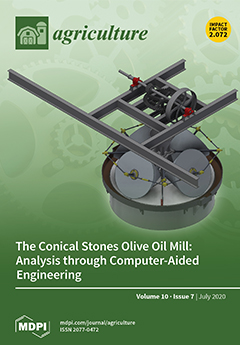Experiments were conducted in a soil laboratory using transparent columns (5 and 40 cm in diameter and length, respectively) to evaluate the effects of water quality (i.e., fresh or saline water) with the addition of biochar on soil moisture characteristics. Soil and biochar were gently combined and added into the top 10 cm of each column at a rate of 2%, 4%, 6%, and 8% (w/w). The results show a decrease in cumulative evaporation by 29.27%, 16.47%, 14.17%, and 14.61% with freshwater, and by 21.24%, 12.22%, 21.08%, and 12.67% with saline water for B1, B2, B3, and B4, respectively, compared with unamended soil (B1, B2, B3 and B4 represent the treatments with the biochar rate of 2, 4, 6, and 8%, respectively). Cumulative infiltration was reduced by 34.38%, 43.37%, 58.89%, and 57.07% with freshwater, and by 30.18%, 44.38%, 54.44%, and 49.11% with saline water for B1, B2, B3, and B4, respectively. The infiltration rate was reduced by 32.73%, 42.17%, 57.82%, and 56.85% with freshwater, and 42.09%, 54.61%, 62.68%, and 58.41% with saline water for T1, T2, T3, and T4, respectively, compared with the control. The saturated hydraulic conductivity of B1 decreased significantly by 92.8% and 67.72% with fresh and saline water, respectively. Biochar, as a soil conditioner, could be used in arid conditions with fresh and saline water to enhance the hydrological properties of sandy soils.
Full article





